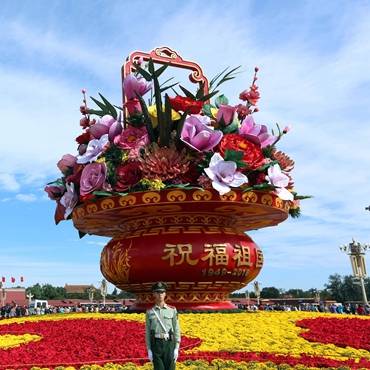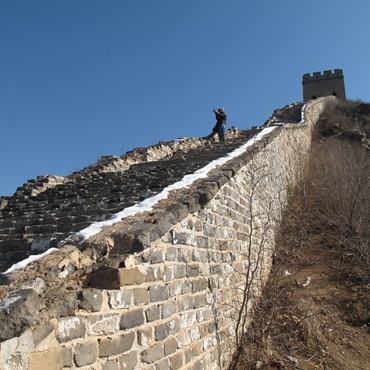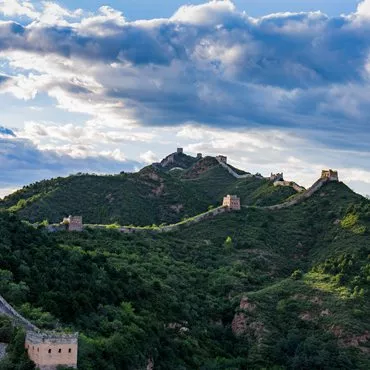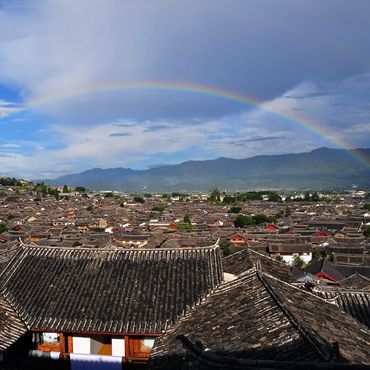Nanluogu Lane
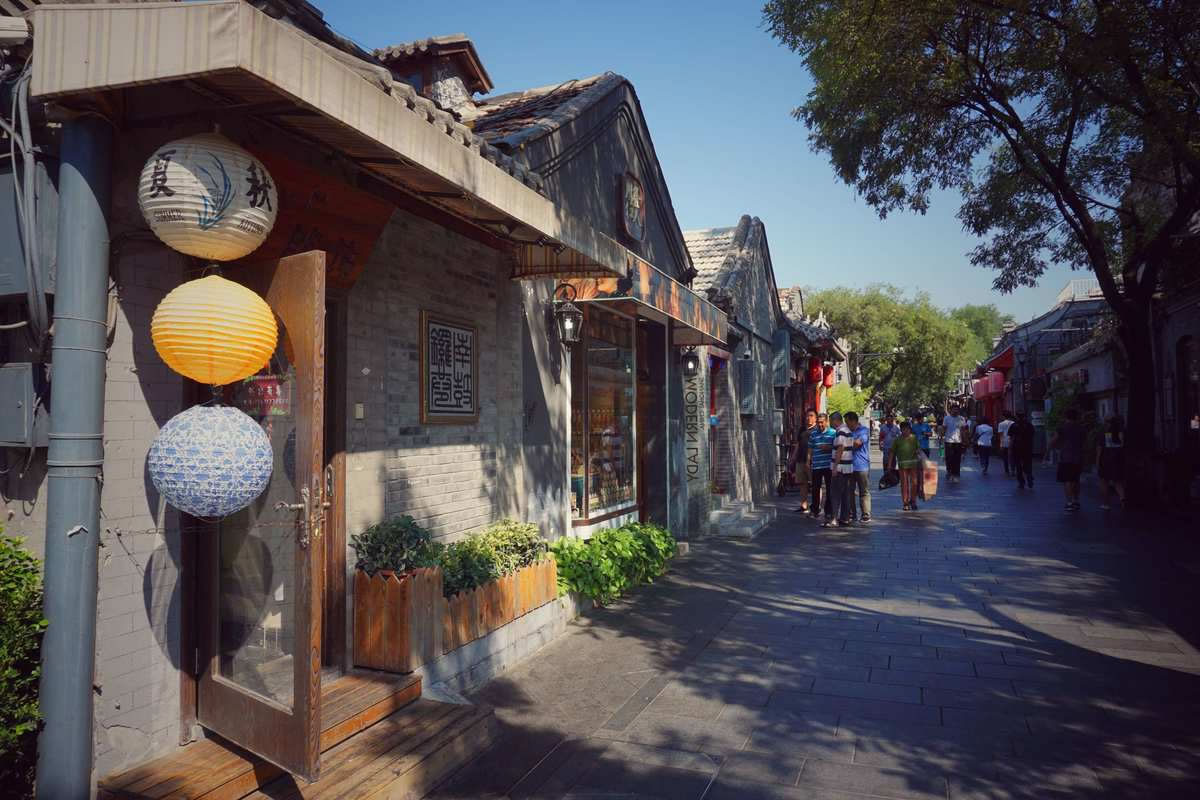
Cuddled on the eastern flank of Beijing’s central axis, Nanluogu Lane, also known as Nanluoguxiang, is a narrow, winding alleyway that stretches from Gulou East Street in the north to Ping’an Avenue in the south. Spanning 787 meters in length and 8 meters in width, this ancient lane is a living relic from the Yuan Dynasty, boasting over 740 years of history. As one of Beijing’s oldest neighborhoods, Nanluogu Lane stands as a testament to the city’s enduring spirit and is among the 25 designated old city preservation areas.
The lane’s peculiar topography, with its higher middle section and lower ends, once gave it the nickname “Humpback Alley.” However, during the 15th year of Emperor Qianlong’s reign (1750), it was officially renamed Nanluogu Lane, a name that has since become synonymous with the rich tapestry of Beijing’s history and culture.
A Treasure Trove of Beijing’s Past
Nanluogu Lane is a living museum, preserving the intricate hutong and courtyard structures of the Yuan Dynasty. It is the only area in China that has retained the original grid-like layout of traditional courtyard residences from that era. This neighborhood is a rare gem, showcasing the grandest and most well-preserved examples of ancient Beijing’s residential architecture, complete with the rich flavor of old Beijing life.
In the Yuan Dynasty, Nanluogu Lane was at the heart of the capital, and during the Ming and Qing Dynasties, it became a prestigious area teeming with the residences of high-ranking officials and wealthy merchants. The area’s glory faded with the fall of the Qing Dynasty, but its historical significance remains intact, offering a glimpse into a bygone era of opulence and power.
An Architectural Marvel
Nanluogu Lane forms part of the "rear market" in the Yuan Dynasty’s city layout, with the lane itself acting as a central axis flanked by eight symmetrically arranged hutongs on either side. This "fishbone" structure, a hallmark of Yuan Dynasty urban planning, is still visible today. The entire district resembles a giant centipede, with Nanluogu Lane as the spine and the hutongs as its legs. It is said that ancient wells once existed at the northern end of the lane, forming the “eyes” of this architectural creature.
Surrounded by Gulou East Street to the north, Di’anmen East Street to the south, Di’anmen Outer Street to the west, and Jiaodaokou South Street to the east, Nanluogu Lane straddles what was once two distinct wards of Yuan Dadu. The eastern side was known as Zhaohui Ward, and the western side as Jinggong Ward, with Nanluogu Lane acting as the dividing line. The grid-like pattern of the hutongs and courtyards reflects the rigorous and precise planning of Yuan Dadu, and despite the passage of 800 years, the layout of these alleys remains remarkably intact.
Notable Landmarks
Prince Sengge Rinchen’s Mansion
At the entrance to Nanluogu Lane, a small plaque marks the former residence of Prince Sengge Rinchen, a Qing Dynasty nobleman. Located at 77 Chaodou Hutong, the mansion once spanned across both Chaodou and Banchang Hutongs, with its main gate facing the former. Though the mansion has since been divided into numerous smaller courtyards, its historical significance remains.
Jin Yunpeng’s Former Residence
Further north in Dongmianhua Hutong lies the former residence of Jin Yunpeng, the warlord-turned-premier during the Republic of China era. This modest residence was once part of a grand estate, now home to the prestigious Central Academy of Drama, where many of China’s most renowned actors, including Chen Baoguo, Chen Daoming, Jiang Wen, Gong Li, and Zhang Ziyi, honed their craft.
Qi Baishi’s Former Residence
Tucked away in Yu’er Hutong is the former residence of Qi Baishi, one of China’s most celebrated painters. The unassuming courtyard, marked by a sign reading “Beijing Artists Association,” has been preserved in its original state, offering visitors a glimpse into the life of this artistic giant.
Mao Dun’s Former Residence
In Houyuan’ensi Hutong, the former residence of the renowned writer Mao Dun stands as a testament to his literary legacy. This simple two-courtyard house, though unremarkable in appearance, holds great significance as the place where Mao Dun spent his final years.
Jiang Jieshi’s Command Post
At 7 Houyuan’ensi Hutong, you’ll find the former residence of Zai Fu, son of the Qing Dynasty’s Prince Qing. During the Republic of China era, this mansion became the temporary command post of Chiang Kai-shek when he was in Beijing. The residence, with its blend of Chinese and Western architectural styles, now serves as a hotel, offering a glimpse into the complex history of modern China.
Ke Garden
At 7–15 Mao’er Hutong lies Ke Garden, once the residence of Wen Yu, a high-ranking official in the late Qing Dynasty. This 11,000-square-meter estate, with its meticulously designed gardens, was inspired by the famous classical gardens of Suzhou, such as the Lion Grove Garden. Though not open to the public, Ke Garden is a hidden gem, regarded as one of the most artistically valuable private gardens in late Qing Beijing.
The Former Residence of Wanrong’s Family
Further down Mao’er Hutong, at No. 35 and 37, is the former residence of Wanrong, the last Empress of China. This grand mansion was meticulously renovated during the early Republic of China era, reflecting its importance as the home of a royal consort’s family.
Qi Garden
In the small and charming Qinlao Hutong stands Qi Garden, once the private residence of a high-ranking official in the Qing Dynasty. Though modest in size, the garden features rockeries, a small pond, and a boat-shaped pavilion, embodying the elegance of southern Chinese gardens.
Ju’er Hutong
At the northern end of Nanluogu Lane, Ju’er Hutong is a shining example of Beijing’s approach to preserving its historic neighborhoods. Led by the renowned architect Wu Liangyong, the renovation project in the 1990s transformed this dilapidated alley into a model of “organic renewal,” blending traditional courtyard designs with modern living standards. The new courtyard homes, with their black-tiled roofs and whitewashed walls, won prestigious architectural awards, including the World Habitat Award, for their innovative approach to urban preservation.
A Cultural and Touristic Hotspot
Today, Nanluogu Lane is a bustling cultural and touristic hotspot, renowned for its unique blend of old and new. The narrow alleys are lined with trendy boutiques, cozy cafes, and stylish bars, all housed in traditional courtyard buildings adorned with red lanterns. This eclectic mix of the old and the modern draws visitors from around the world, eager to experience the authentic charm of old Beijing in a contemporary setting.
Thanks to the construction of Nanluogu Lane Station on Beijing’s Metro Line 6, the area has seen a surge in popularity. The lane has become a focal point for fashion magazines, television dramas, and international tourists alike, eager to “get lost in Beijing” and explore the hidden corners of this ancient city.
Unlike the more commercialized areas of Sanlitun and Houhai, Nanluogu Lane offers a more laid-back, authentic experience. The bars here are quieter, more intimate, offering a serene escape from the hustle and bustle of the city. The lane’s unique charm lies in its ability to balance tradition with modernity, making it one of Beijing’s most iconic and beloved neighborhoods.
Nanluogu Lane’s rich history, combined with its vibrant modern culture, makes it a must-visit destination for anyone looking to experience the true essence of Beijing. Whether you’re strolling through the ancient hutongs, discovering hidden gems, or simply soaking in the atmosphere, Nanluogu Lane offers an unforgettable journey through time, where the past and present coexist in perfect harmony.

